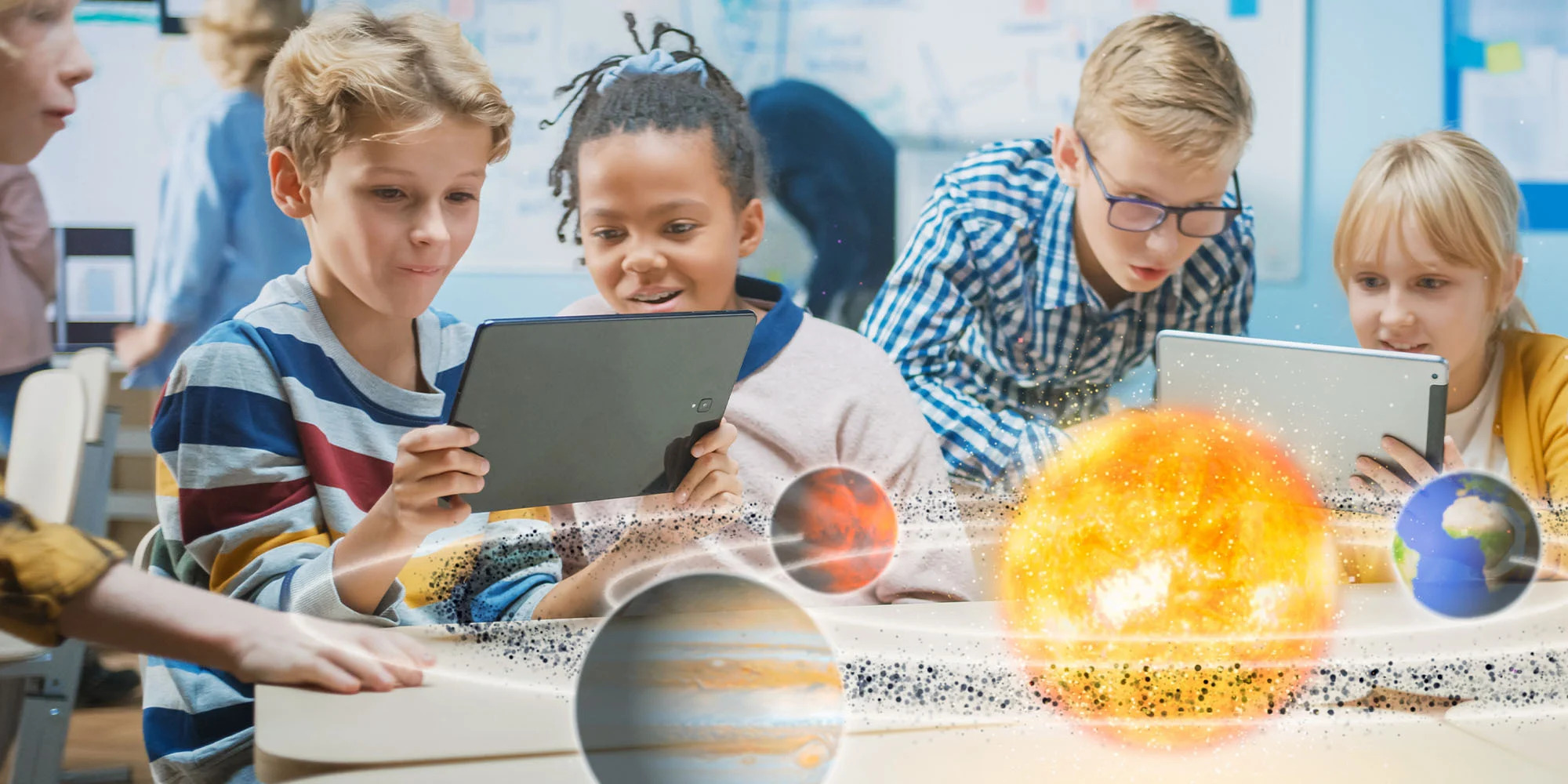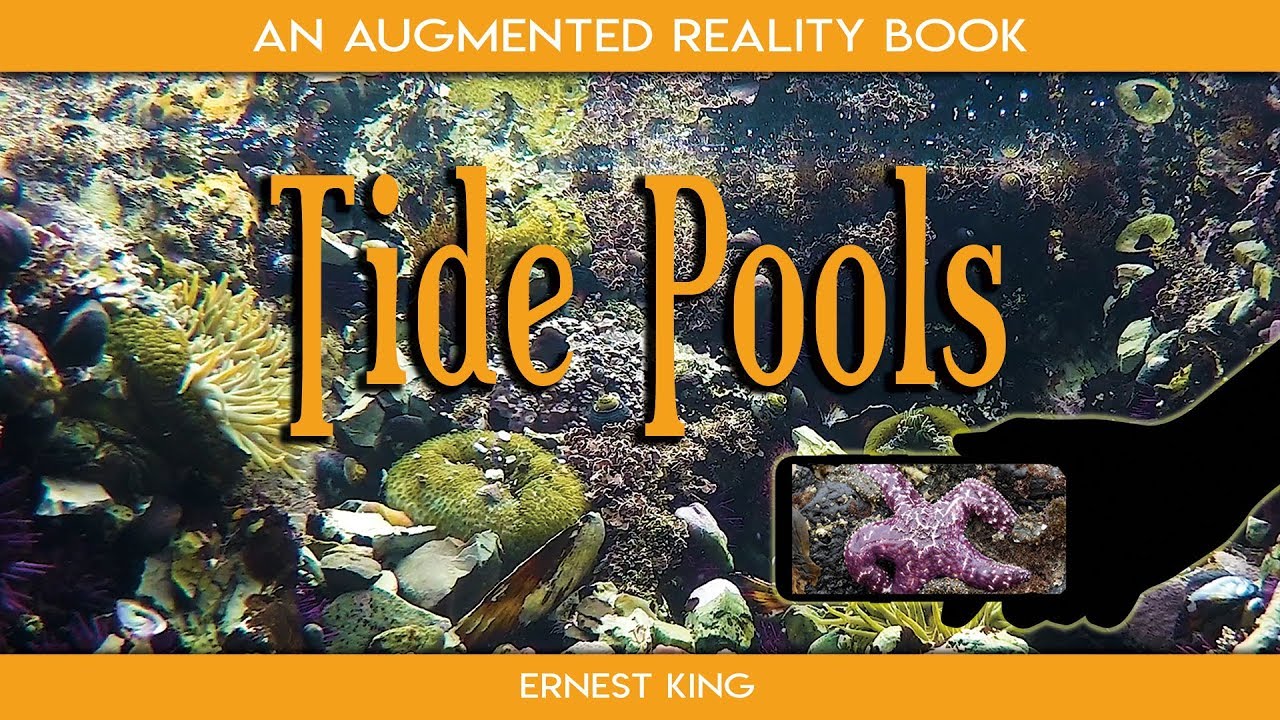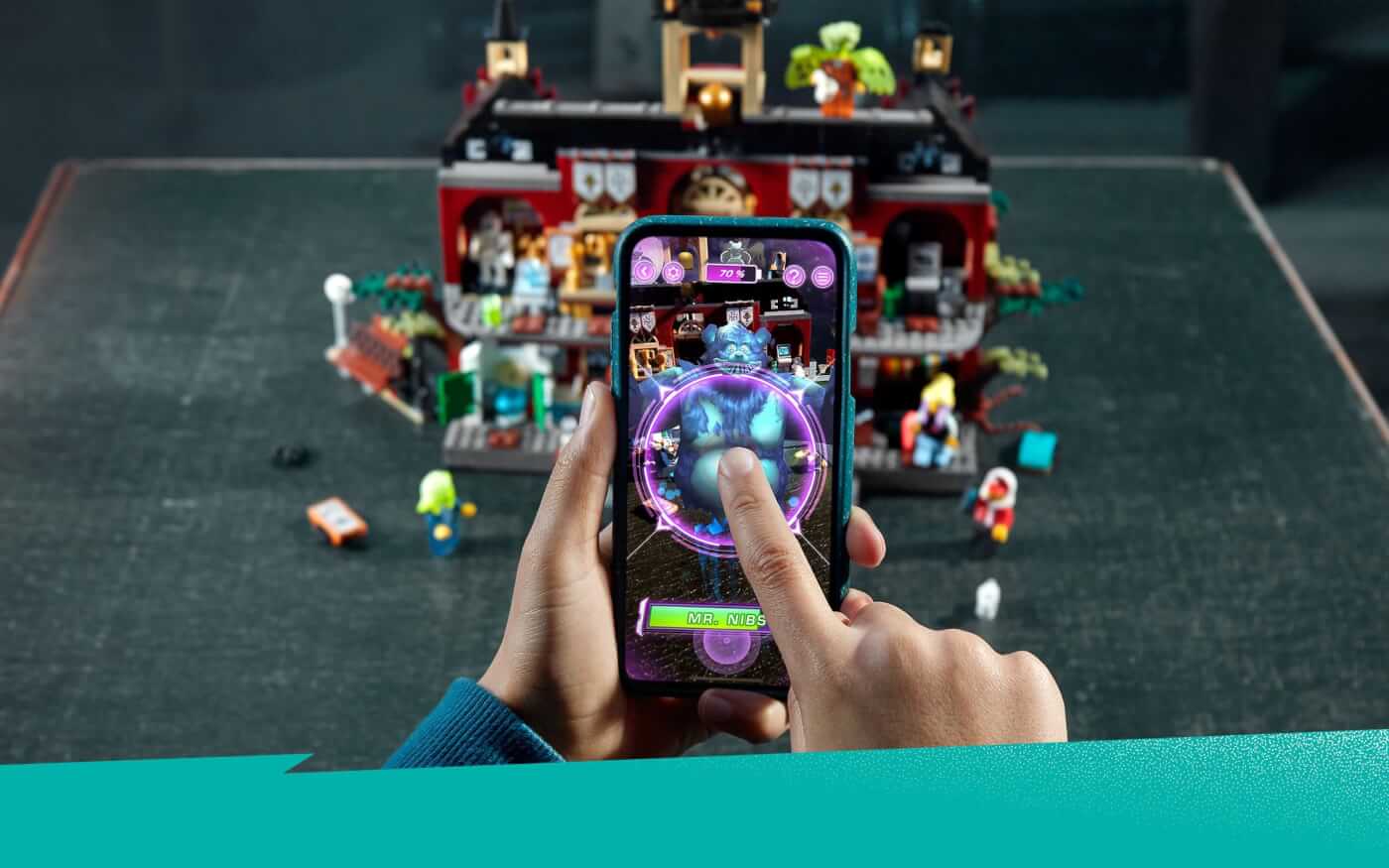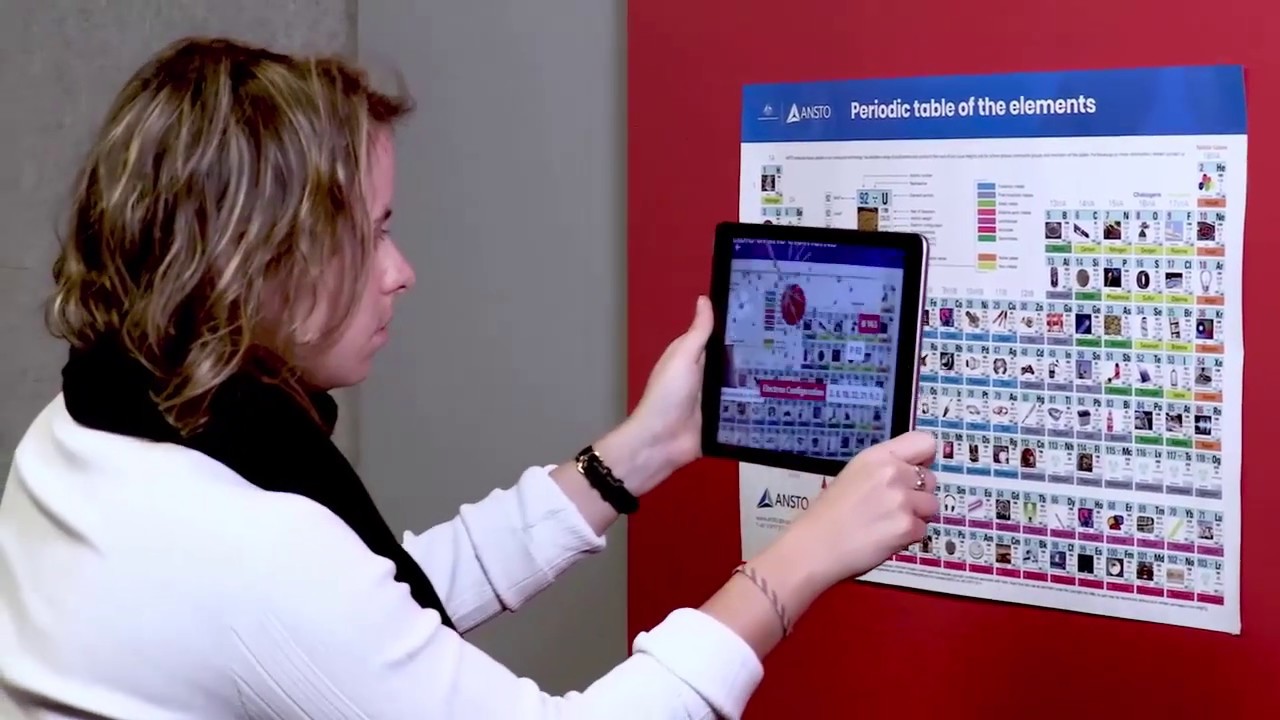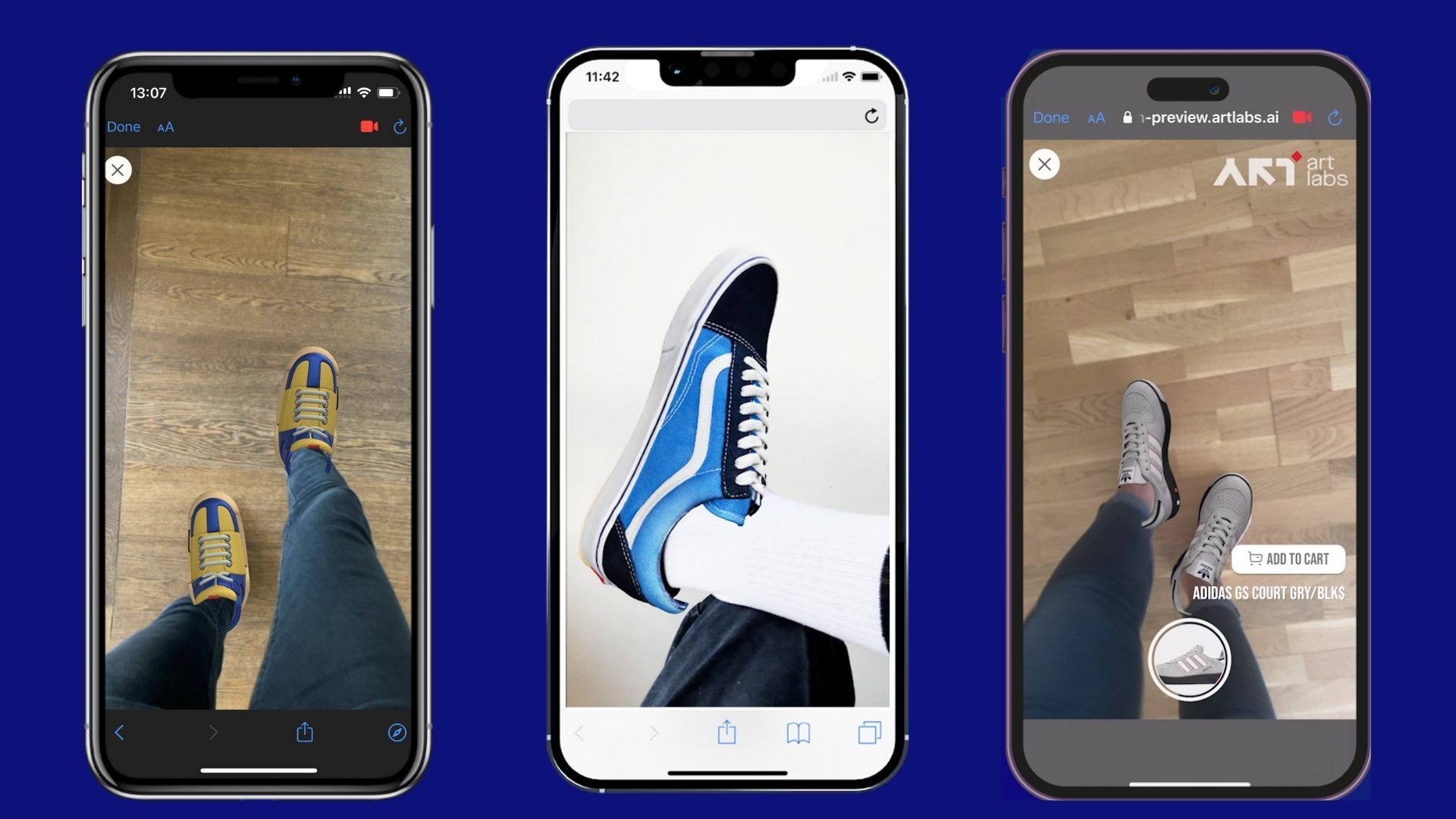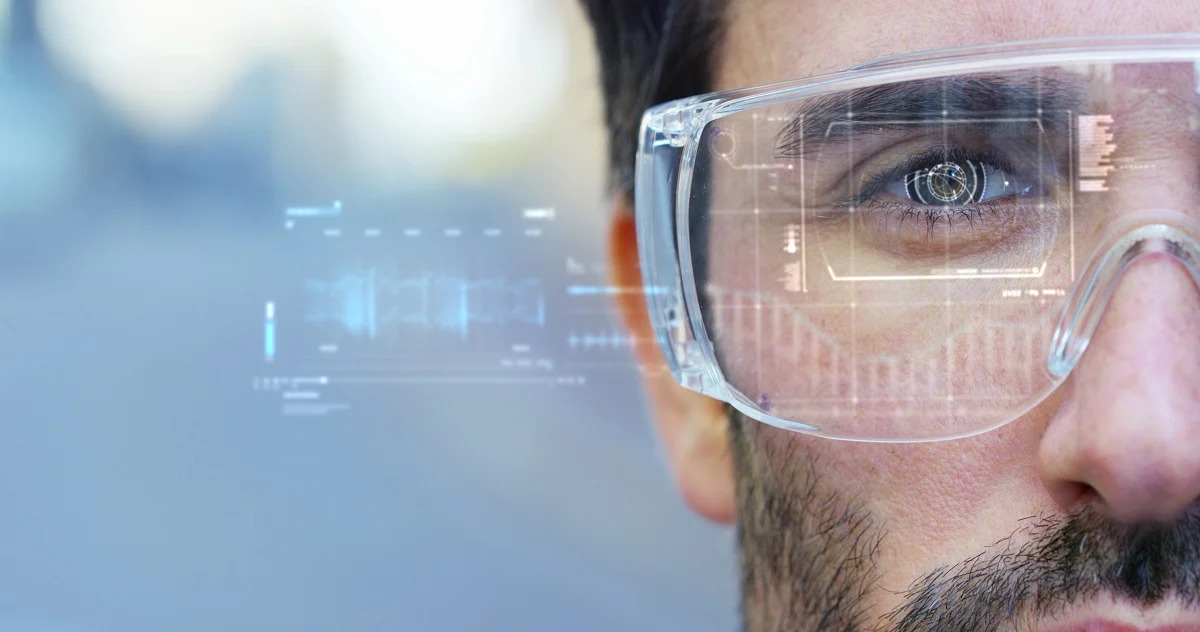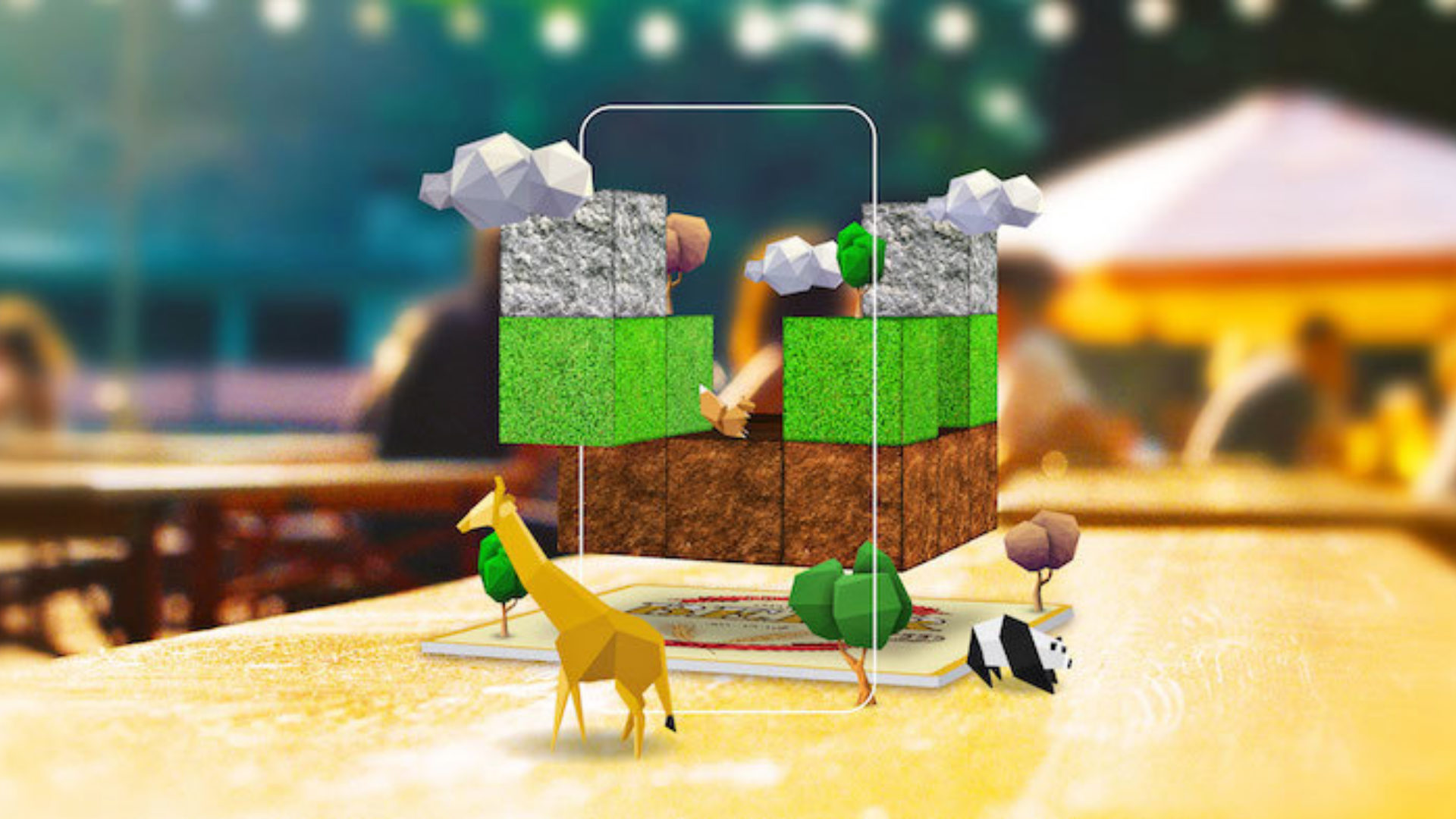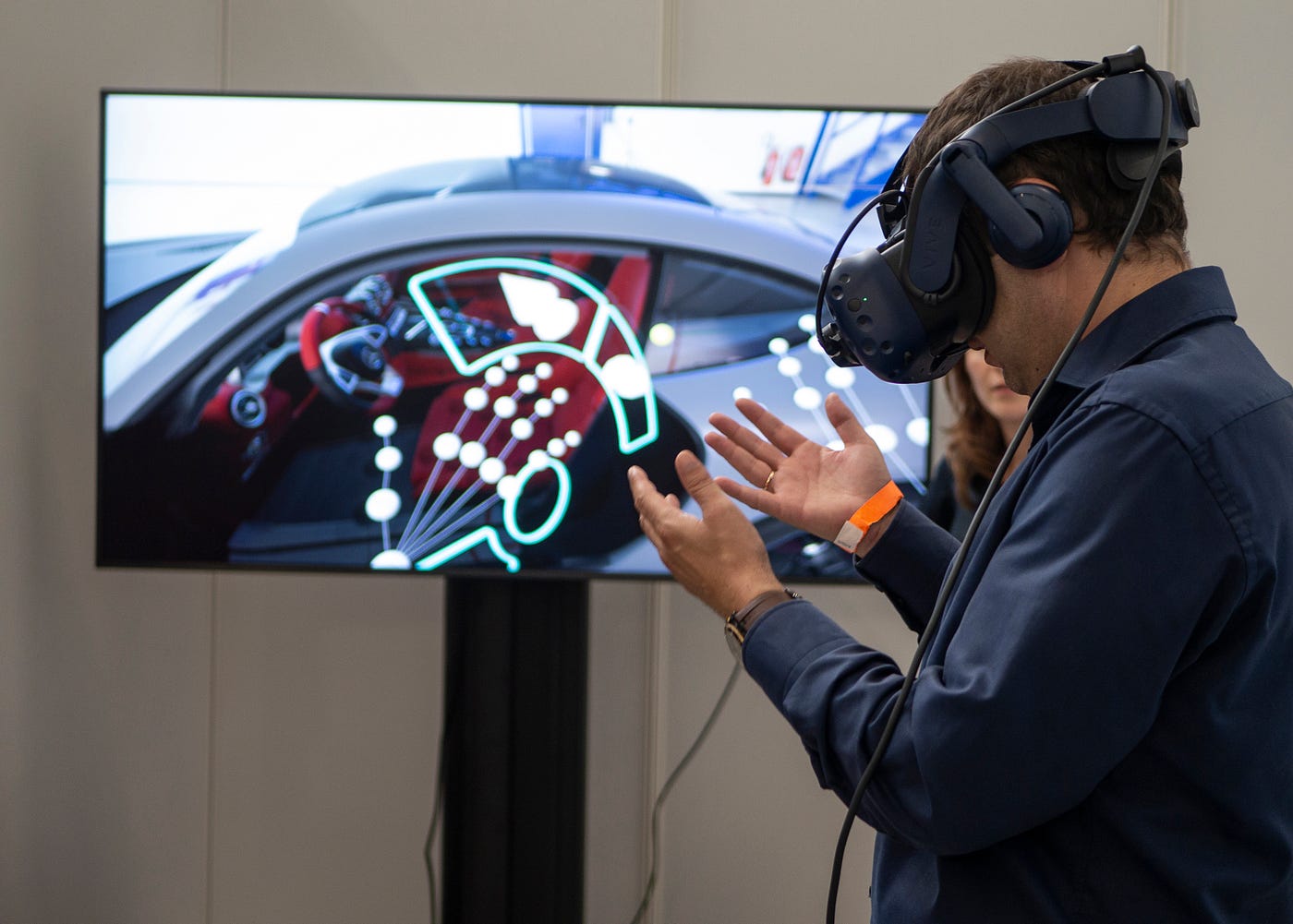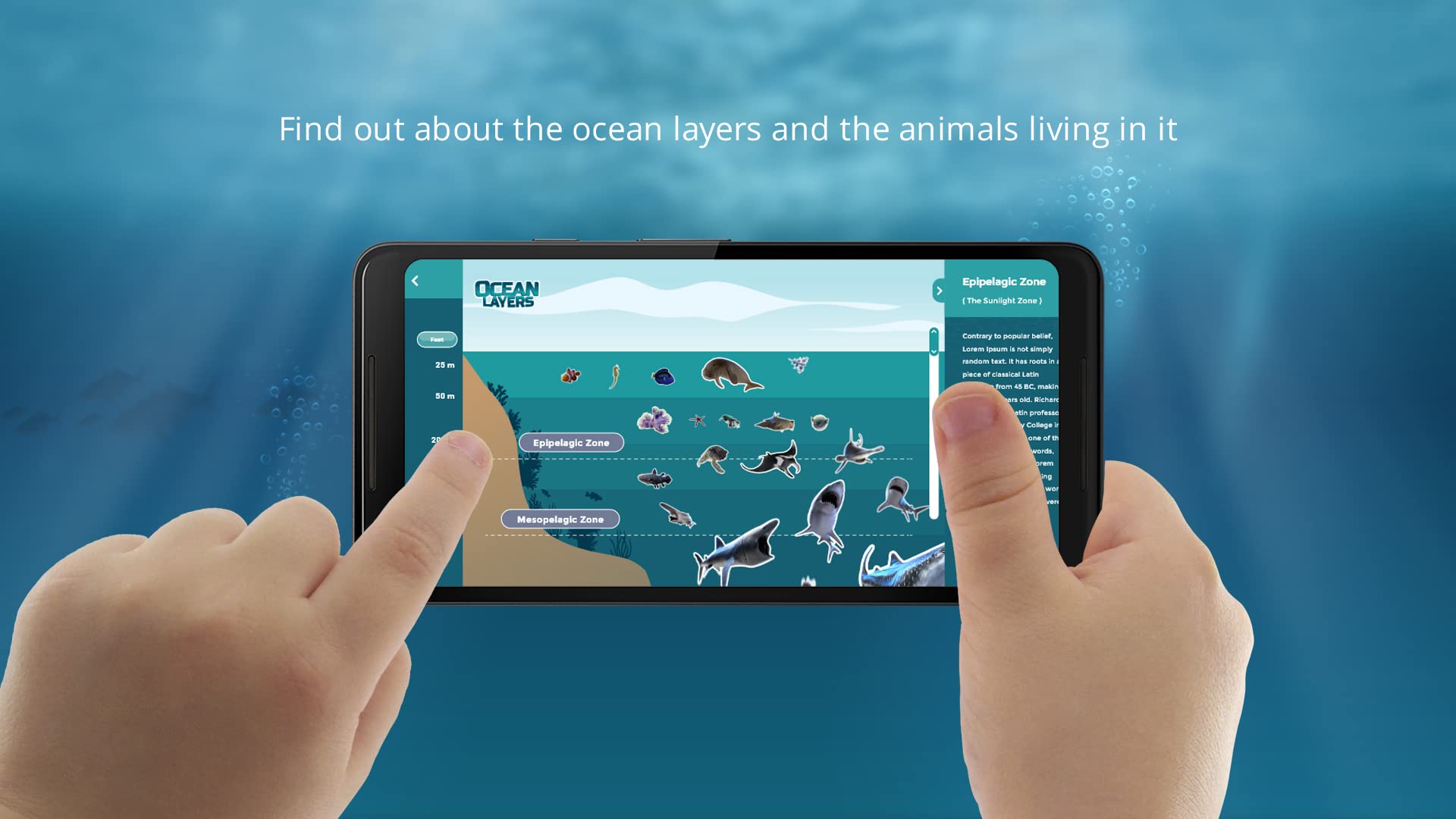Introduction
Welcome to the fascinating world of augmented reality (AR) and its application in education. Augmented reality refers to the technology that superimposes digital content onto the real world, creating an immersive and interactive experience. It has rapidly gained popularity in recent years, revolutionizing various industries, including education.
By blending virtual elements with the physical environment, augmented reality has the power to transform traditional learning methods and engage students in new and exciting ways. It offers a unique and immersive learning experience that goes beyond textbooks and lectures, enabling students to visualize complex concepts and explore subjects in a hands-on manner.
In this article, we will delve into the world of augmented reality in education, exploring its benefits, applications, and limitations. We will explore examples of how augmented reality is being used across various subjects, including language learning, science, history, math, and art. By the end of this article, you will have a deeper understanding of how augmented reality is reshaping the education landscape.
So, fasten your seatbelts and get ready to embark on a journey where virtual and real worlds collide, opening up endless possibilities for teaching and learning.
Definition of Augmented Reality
Before we explore the applications of augmented reality in education, it’s essential to understand what augmented reality actually is. Augmented reality (AR) is a technology that overlays digital information, such as images, videos, or 3D models, onto the real world, enhancing the user’s perception and interaction with their surroundings.
Unlike virtual reality, which creates a fully immersive digital environment, augmented reality enhances the real world by adding virtual elements to it. AR can be experienced through various devices, including smartphones, tablets, smart glasses, and headsets.
AR technology works by utilizing the device’s camera or sensors to track the user’s movements and position relative to the real world environment. The digital content is then projected onto the device’s screen, aligning and interacting with the real-world objects and space in real-time.
There are several types of augmented reality experiences:
- Marker-based AR: This involves using specific markers or images as triggers for the augmented content to appear. When the device’s camera recognizes the marker, it overlays the virtual content onto it.
- Markerless AR: Also known as location-based or GPS AR, this type of AR uses GPS data or sensors to determine the user’s location and superimpose virtual content accordingly. It does not require specific markers.
- Projection-based AR: In this type of AR, the virtual content is directly projected onto real-world objects or surfaces using projectors.
Regardless of the type, augmented reality offers an immersive and interactive experience that bridges the gap between the physical and digital worlds. It allows users to manipulate and engage with virtual elements as if they were part of the real world, creating endless possibilities for education, entertainment, and practical applications.
Benefits of Augmented Reality in Education
Augmented reality has the potential to revolutionize education by offering unique benefits and advantages over traditional teaching methods. Let’s explore some of the key benefits of using augmented reality in education:
- Enhanced Learning Experience: Augmented reality creates an immersive and interactive learning experience that captures students’ attention and enhances their understanding of complex concepts. By visualizing abstract ideas and bringing them to life, AR makes learning engaging and memorable.
- Increased Student Engagement: Traditional classroom settings can sometimes be passive and unengaging for students. Augmented reality transforms learning into an active and participatory experience, as students can interact with virtual objects, manipulate them, and collaborate with peers.
- Personalized Learning: AR technology enables customization of learning experiences to cater to individual student needs and preferences. Students can progress at their own pace, receive immediate feedback, and explore topics and concepts that resonate with their interests.
- Real-World Context: Augmented reality helps bridge the gap between theoretical knowledge and real-world application. By overlaying virtual content onto the real world, students can understand how concepts and theories relate to their surroundings, fostering deeper comprehension and practical skills development.
- Multi-Sensory Learning: AR engages multiple senses, such as sight, sound, and touch, creating a multi-modal learning experience. This stimulates cognitive processes and enhances information retention and recall.
- Collaborative Learning: Augmented reality facilitates collaboration and teamwork among students. They can work together on projects, solve problems collectively, and share ideas and knowledge in a shared augmented environment.
- Accessibility and Inclusivity: AR technology provides access to educational resources and experiences for all students, including those with disabilities. By incorporating features like audio descriptions and haptic feedback, AR ensures that everyone can participate and benefit from the learning process.
These are just a few of the many benefits of using augmented reality in education. As technology continues to advance, educators and researchers are discovering new ways to harness the potential of AR to make learning more engaging, effective, and inclusive.
Examples of Augmented Reality in Education
The use of augmented reality in education is rapidly expanding, with educators and developers finding innovative ways to integrate this technology into various subjects. Let’s explore some examples of how augmented reality is being used in education:
Language Learning with Augmented Reality: Augmented reality can greatly enhance language learning by providing immersive experiences that allow students to practice speaking and listening in real-life scenarios. Language learning apps and platforms use AR to overlay translations, images, and pronunciation guides onto real objects, helping students develop vocabulary and language skills.
Science Education with Augmented Reality: Augmented reality brings science concepts to life by allowing students to visualize and interact with intricate models and simulations. Students can explore the human body in 3D, conduct virtual experiments, and observe natural phenomena like volcanic eruptions or the water cycle, fostering a deeper understanding of scientific principles.
History Education with Augmented Reality: AR can transport students back in time by overlaying historical images, videos, and information onto real-world locations. Students can explore ancient ruins, witness historical events, and interact with virtual historical figures, bringing history to life in a tangible and engaging way.
Math Education with Augmented Reality: Augmented reality can make abstract mathematical concepts more concrete and relatable. AR apps and tools enable students to visualize geometric shapes, solve equations by manipulating virtual objects, and engage in interactive math games that make learning mathematics enjoyable and interactive.
Art Education with Augmented Reality: AR opens up new possibilities for creativity and artistic expression. Students can use AR apps to overlay virtual art onto real-world scenes, explore different art styles and movements, and even create their own augmented reality artwork, allowing for a unique blend of the digital and physical art worlds.
These examples highlight how augmented reality is transforming education by creating immersive and interactive learning experiences. Combined with effective pedagogy and curriculum design, augmented reality has the potential to revolutionize the way students learn, making education more engaging, relevant, and enjoyable.
Language Learning with Augmented Reality
Augmented reality is proving to be a powerful tool for language learning, offering students an immersive and interactive experience that enhances their language acquisition skills. Here are some examples of how augmented reality is being utilized in language learning:
Vocabulary Expansion: Augmented reality language learning apps and platforms use image recognition technology to overlay translations, images, and pronunciation guides onto real-world objects. For example, students can point their device’s camera at a fruit, and the app would display the word and pronunciation guide for that fruit, helping students expand their vocabulary in a tangible way.
Realistic Simulations: Augmented reality can create real-life language scenarios that allow students to practice speaking and listening in a simulated environment. Language learning apps can generate virtual conversations with virtual characters, giving students the opportunity to engage in dialogues, ask questions, and respond, improving their oral communication skills.
Cultural Immersion: Augmented reality can transport students to different cultural settings, allowing them to experience the language and culture firsthand. AR apps can overlay cultural information, landmarks, and traditions onto the real world, giving students insights into the customs, history, and traditions of the target language’s culture.
Interactive Language Games: Augmented reality language learning games make learning fun and engaging. Students can play interactive games that require them to recognize and pronounce words, arrange sentences, and solve language-related puzzles, all while having a visually stimulating and interactive experience.
Language Assessment and Feedback: Augmented reality can provide immediate feedback and assessment on language proficiency. Language learning apps can analyze speech patterns, pronunciation, and grammar usage, providing instant feedback and suggestions for improvement, allowing students to track their progress and refine their language skills.
By incorporating augmented reality into language learning, educators can create a dynamic and immersive environment that fosters a deeper understanding and appreciation for the target language. It provides opportunities for students to actively engage with the language through real-life scenarios, interactive games, and cultural experiences, making the learning process more enjoyable and effective.
Science Education with Augmented Reality
Augmented reality is transforming science education by offering students the opportunity to explore complex scientific concepts in an immersive and interactive way. Here are some examples of how augmented reality is being utilized in science education:
Virtual Experiments: Augmented reality allows students to conduct virtual experiments that would otherwise be dangerous, costly, or impossible to perform in a traditional classroom setting. They can simulate chemical reactions, observe the effects of different variables, and explore scientific phenomena in a controlled and interactive environment.
3D Visualization: Augmented reality enables students to visualize intricate scientific models and structures in three dimensions. They can examine the human body, study the solar system, or explore the intricacies of molecular structures, gaining a deeper understanding of complex scientific concepts through interactive and immersive experiences.
Simulations and Simulators: Augmented reality can simulate real-life scenarios and phenomena, allowing students to analyze and understand scientific concepts in a practical and interactive manner. For example, students can simulate the effects of climate change, explore the ecosystem dynamics, or observe the behavior of animals in their natural habitats.
Interactive Learning Materials: Augmented reality enhances traditional learning materials, such as textbooks and worksheets, by adding interactive elements. Students can scan images or codes in their textbooks, and the augmented reality content can provide additional information, videos, or simulations that supplement their understanding of the scientific concepts being taught.
Virtual Field Trips: Augmented reality can take students on virtual field trips to explore scientific locations and phenomena that are inaccessible or impractical to visit in person. They can visit ancient geological sites, dive into the depths of the ocean, or explore the surface of Mars, experiencing the wonder of these locations and gaining a deeper appreciation for the scientific principles at play.
By incorporating augmented reality into science education, educators can provide students with engaging and interactive learning experiences that go beyond the limitations of traditional classroom settings. It allows students to visualize and interact with scientific concepts, conduct virtual experiments, and explore the natural world in an immersive and practical manner, fostering a deeper understanding and passion for science.
History Education with Augmented Reality
Augmented reality is revolutionizing history education by bringing the past to life and allowing students to engage with historical events, people, and places in a unique and immersive way. Here are some examples of how augmented reality is being utilized in history education:
Virtual Time Travel: Augmented reality allows students to step back in time and witness historical events firsthand. By overlaying virtual content onto real-world locations, students can visit historical sites, explore ancient civilizations, and immerse themselves in pivotal moments in history.
Virtual Guides and Characters: Augmented reality can introduce students to important historical figures and events through virtual guides and characters. Students can interact with virtual representations of historical figures who provide information, answer questions, and share stories, bringing history to life in a memorable and engaging way.
Historical Reconstructions: Augmented reality can recreate historical buildings, structures, and artifacts digitally. Students can view and interact with 3D models of ancient monuments, explore historical maps, and examine artifacts in great detail, allowing for a deeper understanding of historical contexts and cultures.
Dynamic History Lessons: Augmented reality can transform textbook-based history lessons into dynamic and interactive experiences. By scanning images or codes in their history textbooks, students can access additional multimedia content such as videos, images, and interactive quizzes, enhancing their understanding of historical concepts and events.
“Time-Travel” Learning Journeys: Augmented reality can facilitate learning journeys where students are guided through different historical periods and locations. They can progress through interactive timelines, visit multiple historical sites, and complete tasks and challenges to deepen their knowledge and comprehension of history.
By integrating augmented reality into history education, educators can provide students with a unique and immersive learning experience. Augmented reality allows students to step into the shoes of historical figures, explore ancient civilizations, and engage with the past in ways that traditional textbooks or lectures cannot replicate. It fosters a deep connection with history and promotes a greater understanding of its significance and relevance to the present.
Math Education with Augmented Reality
Augmented reality is transforming math education by making abstract mathematical concepts more tangible and interactive. Here are some examples of how augmented reality is being utilized in math education:
Visualizing Geometric Shapes: Augmented reality allows students to visualize and interact with three-dimensional geometric shapes in real-time. They can explore different angles, dimensions, and properties of shapes, enhancing their spatial reasoning and geometric understanding.
Manipulating Virtual Objects: Augmented reality enables students to manipulate virtual objects and observe the effects of changes in real-time. They can rotate, resize, and combine virtual objects, allowing for hands-on exploration of mathematical concepts like transformations, symmetry, and congruence.
Solving Equations and Word Problems: Augmented reality can assist students in solving equations and word problems by overlaying virtual prompts, steps, and visual representations. Students can follow the augmented reality guide to break down complex problems into manageable steps, facilitating their understanding and problem-solving abilities.
Interactive Math Games: Augmented reality math games make learning fun and engaging. Students can play interactive games that involve solving math puzzles, completing number sequences, or practicing mental math skills. These games provide immediate feedback and reward systems, motivating students to practice and improve their mathematical abilities.
Real-World Contextualization: Augmented reality can contextualize math concepts in real-world scenarios, making them more relevant and meaningful to students. For example, students can use augmented reality to calculate measurements of objects in their environment or solve math problems related to everyday situations, connecting math to their daily lives.
By incorporating augmented reality into math education, educators can create an immersive and interactive learning environment that makes math concepts more accessible and engaging. Augmented reality allows students to visualize and manipulate abstract concepts, solve problems in real-time, and connect math to the world around them, fostering a deeper understanding and appreciation for mathematics.
Art Education with Augmented Reality
Augmented reality is transforming art education by merging the physical and digital worlds to create immersive and interactive artistic experiences. Here are some examples of how augmented reality is being utilized in art education:
Virtual Art Exhibitions: Augmented reality enables students to experience virtual art exhibitions, where they can explore and interact with digital artworks overlaid onto their physical surroundings. Students can virtually walk through galleries, view and analyze art pieces, and even create their own augmented reality artwork.
Overlaying Art onto Real-World Objects: Augmented reality allows students to overlay virtual art onto real-world objects, giving them the opportunity to experiment with digital art and explore various art styles and techniques. They can apply digital paint, textures, and elements to objects, transforming them into unique and personalized art pieces.
Artistic Visualization and Composition: Augmented reality can assist students in visualizing their art compositions before physically creating them. They can use AR apps to superimpose and arrange virtual elements onto their real environment, experimenting with different compositions, colors, and textures, enhancing their artistic decision-making skills.
Interactive Art Lessons: Augmented reality can enhance traditional art lessons by providing interactive elements and additional information. Students can scan images or codes in their art textbooks, and augmented reality content can provide step-by-step tutorials, animation demonstrations, and historical information about different art movements, facilitating a deeper understanding and appreciation of art.
Virtual Collaboration and Feedback: Augmented reality allows students to collaborate on virtual art projects, even if they are physically in different locations. They can share their virtual creations, provide feedback, and collaborate with peers in real-time, fostering a sense of community and expanding their artistic perspectives.
By integrating augmented reality into art education, educators can provide students with unique and immersive artistic experiences that go beyond the limitations of traditional art mediums. Augmented reality encourages experimentation, creativity, and exploration, allowing students to merge the digital and physical art worlds and push the boundaries of their artistic abilities.
Challenges and Limitations of Augmented Reality in Education
While augmented reality holds great promise for transforming education, there are also several challenges and limitations that need to be considered. Here are some of the key challenges and limitations of augmented reality in education:
Cost and Accessibility: Implementing augmented reality in education requires specific devices, such as smartphones, tablets, or headsets, which can be costly. Ensuring access to these devices and the necessary software can pose financial barriers for schools and students, limiting the widespread adoption of AR technology.
Technical Requirements and Infrastructure: Augmented reality relies on robust technical infrastructure, including a stable internet connection and device capabilities. Inadequate infrastructure can lead to laggy or inconsistent experiences, hindering the seamless integration of AR into the learning environment.
Content Development: Creating high-quality and relevant augmented reality content can be a time-consuming and resource-intensive process. Developing interactive and engaging AR learning materials requires expertise in both educational content and technology, making it challenging for educators and schools to keep up with the demand for AR content development.
Learning Curve for Educators: Augmented reality is a relatively new technology, and many educators may lack the necessary knowledge and skills to effectively integrate it into their teaching practices. Training and professional development programs are needed to support educators in harnessing the potential of AR and utilizing it to enhance student learning.
Evaluation and Effectiveness: While augmented reality has shown promising results in education, rigorous research is still needed to measure its impact on student learning outcomes. More studies are required to evaluate the effectiveness of AR in achieving educational goals and to understand how to optimize its use in different learning contexts.
Distractions and Overreliance: Augmented reality, if not properly implemented, can become a distraction for students, diverting their attention away from the intended learning objectives. There is a risk that students may become more focused on the technology itself rather than the educational content, potentially impacting their overall learning experience.
Despite these challenges, the potential benefits of augmented reality in education outweigh the limitations. As the technology continues to evolve and become more accessible, addressing these challenges will become easier, leading to the wider and more effective integration of augmented reality in education.
Conclusion
Augmented reality has emerged as a powerful tool in education, offering unique benefits and opportunities for both students and educators. By blending the digital and physical worlds, augmented reality has the potential to revolutionize the way we teach and learn across various subjects.
Through examples in language learning, science, history, math, and art education, we have seen how augmented reality enhances the learning experience, increases student engagement, and fosters deeper understanding. It brings abstract concepts to life, provides hands-on and interactive experiences, and connects learning to real-world contexts.
However, as with any technology, there are challenges and limitations to consider. The cost and accessibility of augmented reality devices, the need for robust technical infrastructure, and the development of high-quality content are among the challenges that need to be addressed. Educator training and research on effectiveness are also crucial for successful integration.
Despite these challenges, the potential of augmented reality in education is immense. It provides students with immersive and personalized learning experiences, expands access to educational resources, and promotes creativity, critical thinking, and collaboration. Augmented reality has the power to transform traditional learning environments into dynamic and interactive spaces that inspire curiosity and lifelong learning.
As technology continues to advance and become more accessible, the possibilities for augmented reality in education are only set to expand. By embracing this innovative technology and combining it with effective pedagogy, educators can unlock new dimensions of learning, empowering students to thrive in the digital age.







